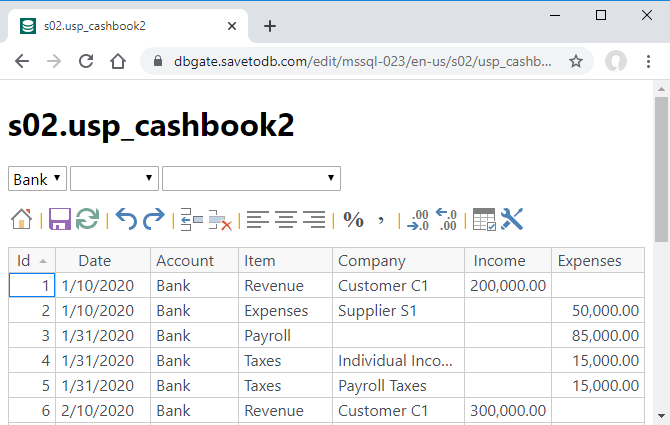Getting Started with DBGate
DBGate is a cross-platform application that allows viewing and editing database data in a browser.
Its server-side ASP.NET Core application implements a REST service that does the following:
- It selects data from tables and views via GET.
- It executes stored procedures that return data via GET.
- It inserts, updates, and deletes data from tables and views via POST, PUT, and DELETE.
- It executes stored procedures that modify data via POST, PUT, and DELETE.
To create a service, add a named connection string to the application settings.
DBGate creates a model for all available tables, views, and stored procedures reading the database metadata.
It supports SQL Server, Oracle Database, MySQL, MariaDB, and PostgreSQL on Windows and Linux.
For example, a service configured using the mssql-023 connection string has URLs like this:
- https://dbgate.savetodb.com/api/mssql-023/
- https://dbgate.savetodb.com/api/mssql-023/cashbook
- https://dbgate.savetodb.com/api/mssql-023/usp_cashbook
DBGate also includes a JavaScript client available at the /edit/ endpoint like the following:
- https://dbgate.savetodb.com/edit/mssql-023/
- https://dbgate.savetodb.com/edit/mssql-023/cashbook
- https://dbgate.savetodb.com/edit/mssql-023/usp_cashbook
Here is a sample screenshot of the client:

You can load data from tables, views, and stored procedures. You can edit data and save changes back.
We believe that DBGate revolutionary changes the in-house application development
because creating well-designed databases is enough to deliver corporate web applications.
You can get the first results quickly. Take a look at these articles:
Database developers can customize API models and JavaScript client features. See more details here: